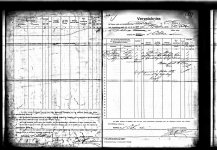Taphrospilus
Well-known member
Just a start as I know nothing about Gustav Hopke mention in OD Beschreibung vier neuer Vogelarten aus West-Columbien . At least he lived in 1897 as Berlepsch wrote:
The Eponym Dictionary of Birds claims:
Not sure about the Berlepsch 1902 source but here he is in fact called late Gustav Hopke (but 1911).
I found as well:
Maybe anyone else have more information about his life dates? OK here already 1903 named late by William Robert Ogilvie-Grant .
He sent as well eggs of Leucophaeus scoresbii .
Diesen prächtigen neuen Vogel benenne ich nach seinem Entdecker, Herrn G. Hopke den ich dadurch zu weiteren ornithologischen Forschungen anzuregen hoffe.
The Eponym Dictionary of Birds claims:
Hopke's Cotinga Carpodectes hopkei Berlepsch, 1897 [Alt. Black-tipped Cotinga] Gustav Hopke (d.c.1902) was a German field collector who specialised in South American mammals. He collected mostly in Paraguay and Chile (c.1897), and in Colombia where the cotinga occurs. Berlepsch refers (1902) to 'the late' Mr Gustav Hopke.
Not sure about the Berlepsch 1902 source but here he is in fact called late Gustav Hopke (but 1911).
I found as well:
Gustav Hopke was engaged in bird collecting around Puerto Montt , Llanquihue , in the latter half of 1895. The bulk of his collection went to the late Count Berlepsch , but a set was acquired by the Vienna Museum .
Maybe anyone else have more information about his life dates? OK here already 1903 named late by William Robert Ogilvie-Grant .
He sent as well eggs of Leucophaeus scoresbii .
Last edited:






